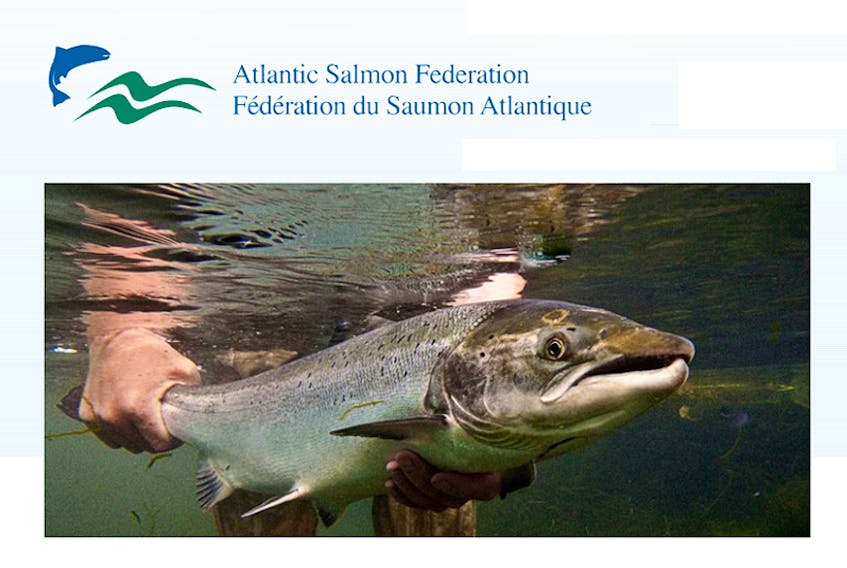The Atlantic Salmon Federation said Friday its review of the Grieg NL salmon aquaculture project’s environmental impact statement (EIS) has spawned a lot of concern.
In fact, the federation says, the EIS is so deficient in many areas that the provincial government should reel it in from public review and cast it back to Grieg for further work.
“We are profoundly disappointed by the proponent’s inadequate efforts to understand the local environment, predict and evaluate impacts, and monitor outcomes, particularly around issues related to wild Atlantic salmon,” Stephen Sutton, the federation’s co-ordinator of community engagement, wrote in a letter to the provincial government.
“We conclude that the EIS does not address the concerns raised by the public, the issues identified by the Environmental Assessment Division during the screening review, the issues upon which the Supreme Court of Newfoundland and Labrador based its decision to order an EIS for the project, or the EIS guidelines. Therefore, we conclude that the EIS and component studies are deficient. Substantial additional work must be done by the proponent to meet the standards clearly defined in the guidelines.”
The project as proposed by Grieg NL Nurseries Ltd. and Grieg NL Seafarms Ltd. includes plans to build and operate a hatchery for Atlantic salmon in Marystown, with sea-based fish farming at multiple sites in Placentia Bay.
As part of the overall review process for the EIS, the provincial government offered the document to the public for comment. It includes a roughly 600-page main submission on the aquaculture project by the company, but also detailed "component studies" covering a range of sub-topics, such as the specific type of sea cages proposed, the local fish habitat and the cultural importance of the waters of Placentia Bay.
After the public comment portion of the review is completed, the minister responsible for Municipal Affairs and Environment, Andrew Parsons, will have 20 days to return a decision on whether or not to approve the project, and, if approved, under what conditions.
Sutton said the federation’s review of the EIS identified numerous issues and deficiencies across four main areas: lack of original data collection to augment the information presented in the project registration document; evaluation of potential impacts not rigorous or balanced, resulting in conclusions that are not justified; lack of meaningful detail about the proponent’s approach to follow-up monitoring programs; and superficial evaluation of project alternatives, with unjustified conclusions.
The federation’s review further states the company made no effort to collect baseline data on threatened wild Atlantic salmon in Placentia Bay despite a lack of data on wild salmon being a key reason why the EIS was ordered.
“The proponent continues to claim that any escaped salmon will be sterile and not able to interbreed with wild salmon, but have provided no evidence to support this claim,” the review continued. “The impact of the spread of sea lice from sea-cages to wild salmon has not been adequately addressed. The proponent plans to use cleaner fish (lumpfish) to attempt to control sea lice in the cages, but provides no evidence that this will prevent sea lice from spreading to wild salmon. The impacts on wild salmon from sea lice outbreaks in the farms have not been assessed.”
The review also claims the extent to which pesticides and antibiotics are likely to be used has not been fully acknowledged in the EIS, or their potential impact upon the environment.
The federation also suggests a proposed follow-up monitoring program is inadequate.
“Monitoring programs are needed for sea lice and disease impacts on wild salmon, movement of escaped farmed salmon into rivers, ecological interactions between wild and escaped farmed salmon, and abundance and genetic integrity of wild salmon,” the review states.
“The proponent has not provided a balanced and defensible analysis of the potential for using land-based facilities instead of sea-cages. Insufficient, inaccurate and misleading information has been provided to justify rejecting the land-based alternative. Conclusions around the carbon footprint, land and water use, and electricity needs of land-based facilities are not supported by the information provided.”
The aquaculture project has been in development since 2015, hitting a legal barrier when an initial decision to release the development from environmental assessment was challenged in the courts.
While the legal issues continued, the province re-started the assessment process and laid out a path for the company to proceed by completing a more detailed environmental review, including the costly EIS requirements that were not required last time around.









